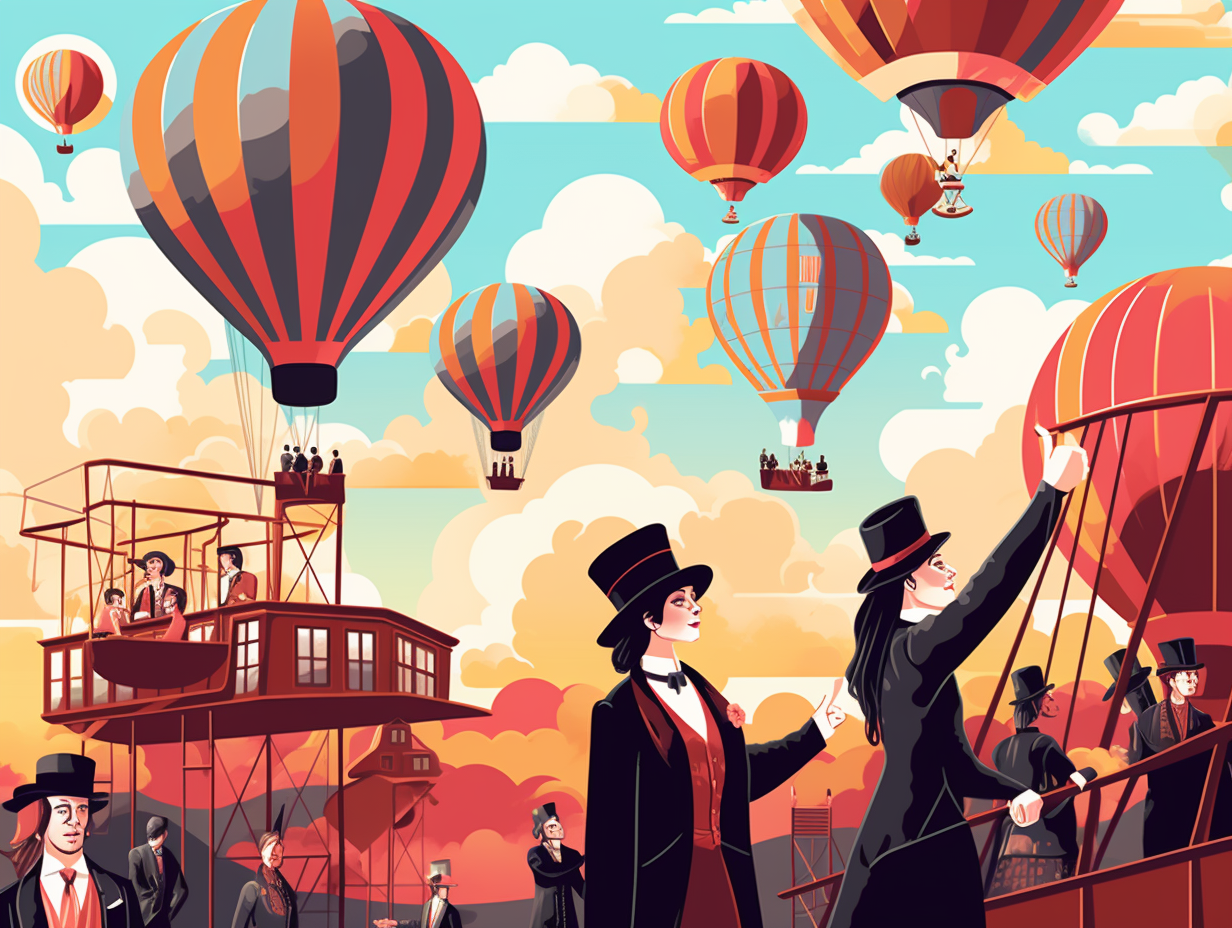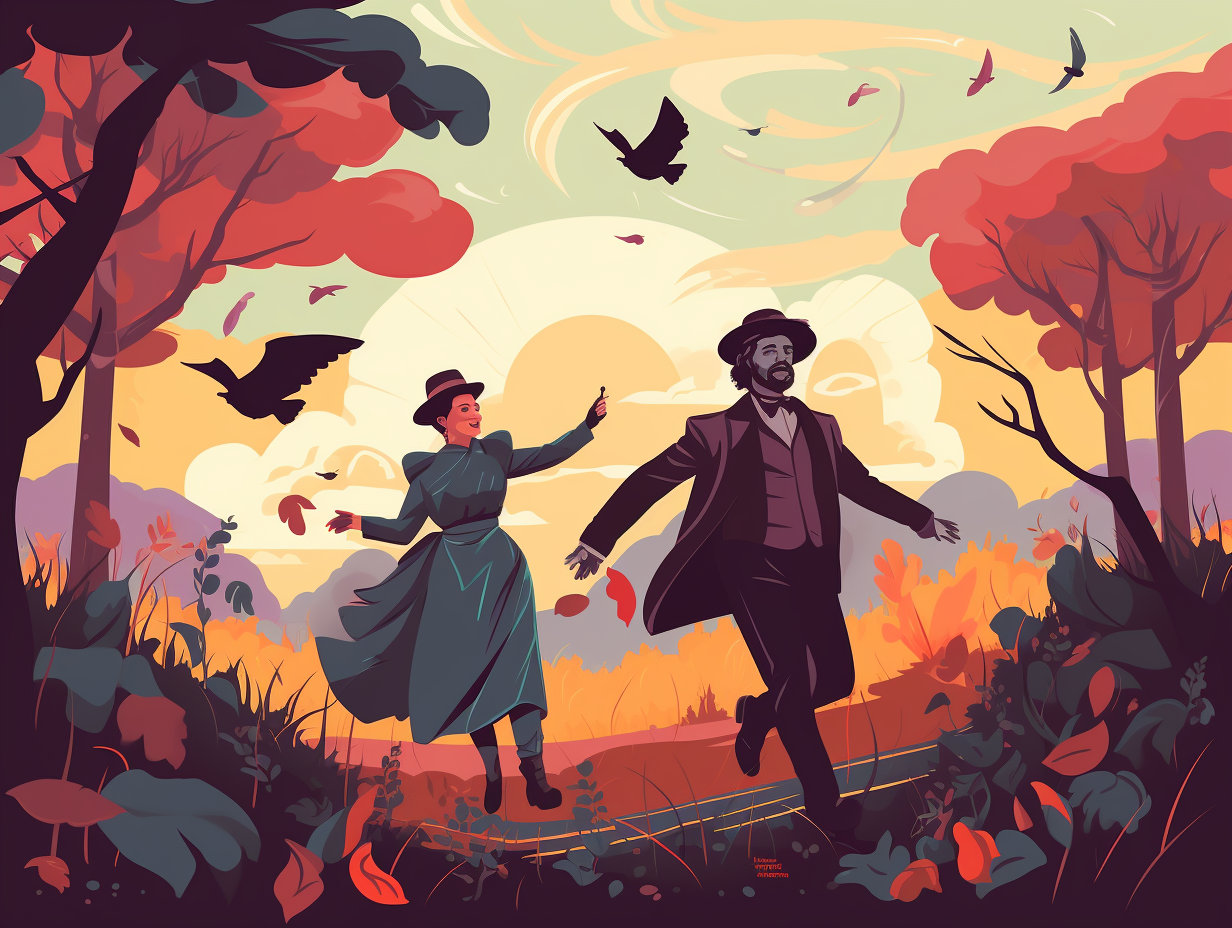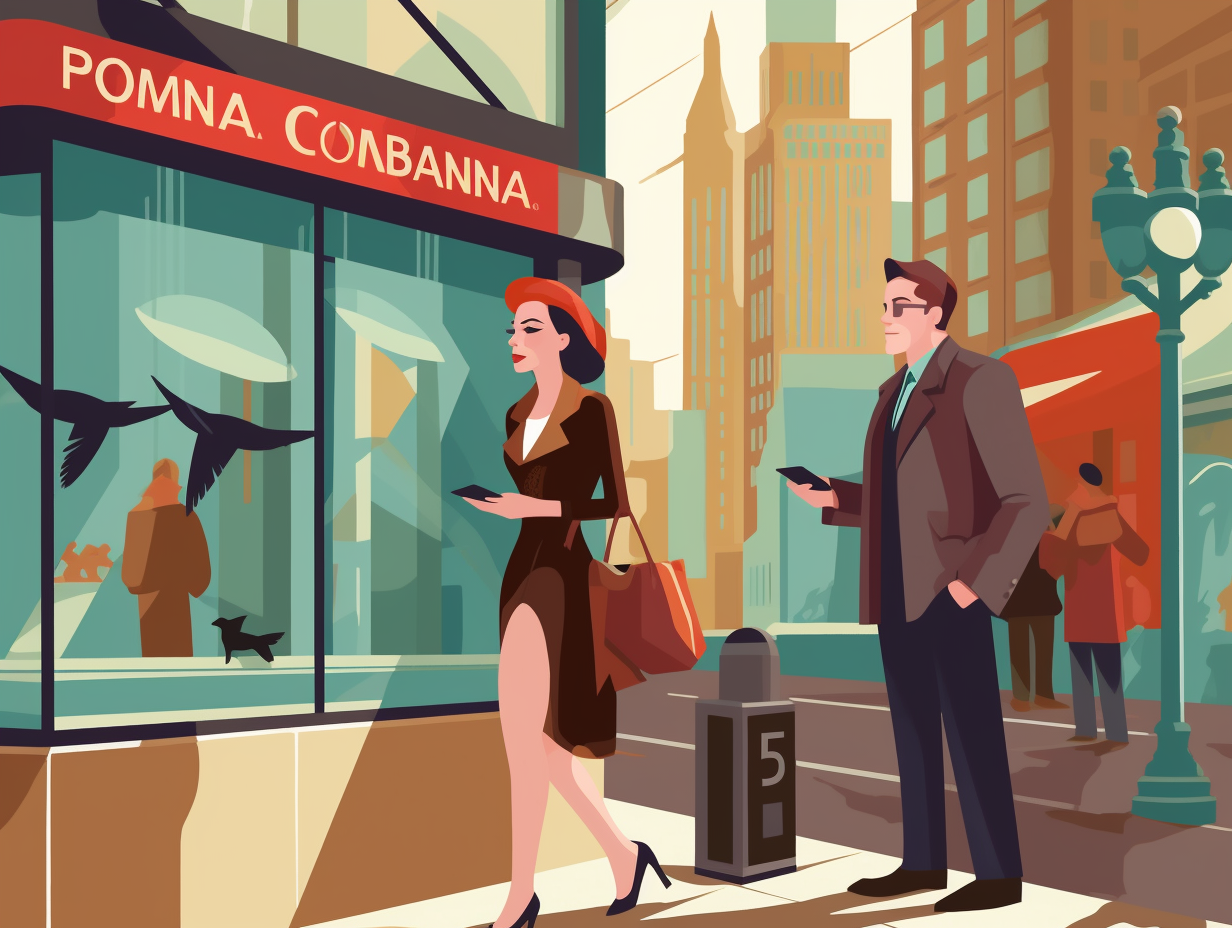Discover the Unbelievable: Top 13 Fun Facts About the Industrial Revolution!

1. Standard sizing: Fashion's game-changer
Before there was Zara, before "Get thee frisky in my large shirt, good sir" became a favorite pickup line at ye olde taverns, there was the game-changing invention of standard sizing: In 1863, printed paper patterns in standard sizes hit the scene, revolutionizing the fashion industry and making mass-produced clothing more accessible. Sewing machine ads from the I. M. Singer Company in the 1850s also played a role by boasting a machine "especially adapted to the making up of Negro clothing." And that, ladies and gents, is how our wardrobe got its groove on!
Source => lithub.com
2. Locomotives: Setting the clock for punctuality
Choo-choo-choose to laugh: during the Industrial Revolution, the invention of the locomotive not only sped up commutes and transported goods faster, but it also played a crucial role in establishing time zones and a more punctual society, leaving sun-powered clocks in the proverbial dust – yet it couldn't do much for family vacation dynamics!
Source => foundations.uwgb.org

Descend into the hidden world of Victorian London's mysterious underground sewers, where a revolutionary network battled stench and disease, disappearing entire communities without a magic wand in sight. 🐍🕳️
=> Fun Facts about The-Victorian-Era
3. Garibaldi biscuits: A tasty Industrial Revolution treat
Hold on to your top hats, folks, because we're dishing out a raisin for celebration: During the Industrial Revolution, one of the first commercially produced and packaged foods to emerge was the Garibaldi biscuit - a scrumptious, flaky cookie with raisins or currants nestled inside. Today, these delightful treats continue to be enjoyed, proving that the Industrial Revolution left a not-so-crumbly legacy on our food culture.
Source => soyummy.com
4. Steam engines: Amping up the power
Before James Watt decided to "steam things up" and let off some pressure in the 18th century, engines were simply stuck in "low gear": The Industrial Revolution was sparked by Watt's invention of the steam engine, which revolutionized transportation and provided the power needed for new production machinery.
Source => historycrunch.com

5. Women workers: The hidden workforce
As the saying goes, "Behind every great man is a woman rolling her eyes": During the Industrial Revolution, women's participation in paid labor outside the home did not significantly increase, as they were primarily employed in domestic service, and in the other limited industries where they were involved, the data was too unreliable to accurately gauge their contribution.
Source => eh.net
6. Worker antics: Rooftop escapes and song sessions
From rooftop rendezvous to pre-Karaoke shenanigans, the 1800s saw factory workers unlocking their inner work-life balance pioneers: It was not uncommon for them to scale the factory roofs during lunchtime, seeking a brief encounter with sunlight, or indulge in impromptu, boisterous song-sessions and games with colleagues as a way to break the monotony and build camaraderie within their bleak working surroundings.
Source => todayifoundout.com
7. First strike: Tailors on the frontline
Before runway meltdowns and designers' tantrums, tailors were striking a pose of their own: The first recorded strike in America happened in 1768, when New York journeymen tailors protested against a wage cut, leading to the formation of the Federal Society of Journeymen Cordwainers in 1794 and marking the beginning of organized trade unions among American workers.
Source => history.com
8. Josiah Wedgwood: Pottery for freedom
Who knew pottery could fire up a revolution: Josiah Wedgwood, the ceramic virtuoso of the industrial revolution, not only shaped elegant teapots and creamers but also championed the American cause for independence, using his pottery empire to support his Enlightenment ideals on freedom, social welfare, and workplace safety.
Source => livesandlegaciesblog.org
9. Cigarette machines: Puffing up production
Say goodbye to "smoke 'em if you got 'em" and hello to "roll 'em faster than you can smoke 'em": The industrial revolution brought forth innovations like the hydraulic press and the Bonsack cigarette machine, making tobacco production a breeze and lowering the cost of cigarette production, ultimately paving the way for widespread cigarette popularity in the late 1800s.
Source => encyclopedia.com

10. Fire insurance: Flaming fantastic growth
In an age when Fireball whiskey wasn't yet invented, but real fireballs threatened factories and homes, the industrial revolution had a secret weapon up its sleeve: the rise of fire insurance! Taming the flames and providing a safety net for entrepreneurs and middle-class families, fire insurance not only mitigated the risks associated with rampant economic growth, but also fueled public infrastructure projects, turning England into a red-hot hotbed of bustling development.
Source => eh.net
11. Child labor: Industrious innocence exploited
Who needs childcare when you've got factories and mines: During the Industrial Revolution, women and children as young as six toiled away for endless hours, earning less than men and receiving harsh punishments for tardiness or rule-breaking.
Source => foundations.uwgb.org
12. Penny press: Democratizing news
Fueled by ink from the quill of Zorro and smoky steam, forger of mass pop news: the penny press newspapers burst onto the scene during the industrial revolution, making news accessible and affordable for the middle class thanks to steam-powered printing and advertising revenue, thus dethroning elitist newspapers from their perch atop Olympus.
Source => en.wikipedia.org
13. Steam-powered London: Brewing a bustling metropolis
If London was a pot of tea, the Industrial Revolution was the whistle that signalled it had reached the perfect brew: the steam locomotive and railways significantly contributed to London's growth from a cozy population of 1 million in 1801 to a bustling metropolis of 6.5 million a century later, becoming the world's largest city, all thanks to steam power tripling travel speeds and creating a functional, efficient urban landscape.
Source => chicagobooth.edu
Related Fun Facts




















